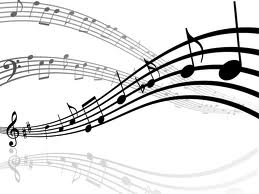Do you feel frustrated when you listen to native speakers, as if we use English in a completely different way than what you learned in your English class? Is there something missing in the flow of your communication, like a block in your mind that prevents you from feeling natural when you speak English?
Today we’re going to explore three EXTREMELY important, but rarely taught, components of English fluency that can drastically change the way you speak, listen, and flow in communication.
These dynamic aspects of fluency are absolutely crucial for the proficient use of the English language because native speakers use them everywhere. The only problem is that very few people know how to explain this, and there are almost no schools that that teach this.
Today you have a special opportunity to learn. Here are the 3 Most Powerful English Fluency Secrets they don’t teach you in school:
- SOUND MORPHING: How natives cut, mix, and leave out words and sounds when we speak.
- DISCOURSE MARKERS: An extremely dynamic group of common words and phrases that serve to fill, connect, link, pivot, as well as give space and rhythm to communication.
- PRONUNCIATION, INTONATION, RHYTHM & FLOW: Elements of native pronunciation and entonation that (a) facilitate your listening comprehension, and (b) permit you to flow with the natural rhythm of fluent English communication.
Here are the 3 Powerful Fluency Secrets explained:
1. SOUND MORPHING
Again, sound morphing is how native speakers cut, mix, and leave out words and sounds when speaking. This is one of the biggest reasons why most English learners don’t understand native speakers. Learning this is not as hard as you might think.
Listen-Part II Audio:
While most people believe that the reason they don’t understand us is because we speak too fast or with too much slang, there is little or no truth to this. You have such a hard time understanding us because we mix and run our words together, and this is something 99% of English learners never have the opportunity to learn.
Let’s start by demonstrating this with a few quick examples of how the English language is really spoken versus how people learn it. I will repeat the same sentence first naturally, then mechanically, then naturally again.
A. How native speakers really speak (only listen):
B. Textbook pronunciation (listen and read):
“What are you going to get when you go to the store tonight with the wife and kids?”
C. How native speakers really speak (listen and read)-
“whatcha gonna get when ya go-da-the store-danight wi-the wife ‘n kids?”
This is how we really speak, and the objective of this lesson is to help you open your mind to the fact that sound morphing is EVERYWHERE in the spoken English language. If you learn to understand and use these, it will help your fluency a lot.
- What are you= whatcha/whatch-ya- What are you doing? (wha-tchya doin’?/ Wha-da-ya doin’?)
- What did you= “wha-djya”- What did you do today? (“wha-djya do-daday”)
- What do you= “wha-da-ya”- What do you think? (“wha-da-ya think?”)
- Going to= gonna
- Want to= wanna
- Got to= gotta
- Should have= shoulda
- Could have= coulda
- Would have= woulda
- Give me= gimme
We will explore this topic more in future texts, but if you’re an official member of the RLE Community, we teach this in the Real Life English Mini Course, FREE to Newsletter Subscribers.
How Natives Connect Their Words (Gonna, Wanna, Gotta)
2. DISCOURSE MARKERS
Listen-Part III Audio:
As mentioned in the intro, discourse markers are an extremely dynamic group of words or phrases that serve as linguistic mechanisms to fill, pivot, connect, link, and give space and rhythm to a spoken conversation. You surely have discourse markers in your native language.
This definition probably sounds complicated, but now we’ll present a comparison of two sentences: one with discourse markers (Example A) and the other, which is the nearly the same sentence, without them (Example B). Listen and see how they each flow and try to feel the difference in meaning. The difference is subtle, but it is significant.
Example A (with Discourse Markers):
So, Look, you see, I’m not like totally fluent in Italian, you know, but it’s kind of similar to Spanish. Well, I mean, they aren’t exactly the same, but they have kind of like similar grammatical structures, you know?
Example B (without Discourse Markers):
I’m not totally fluent in Italian, but it’s similar to Spanish. They aren’t exactly the same, but they have similar grammatical structures.
You can argue that example B is way more objective, grammatically correct, and clear, but I would like to emphasize that native speakers don’t speak like this because fluent English speakers do not speak like robots. We are human, and we need these spaces to think, reflect, change direction, and communicate delicate, intangible, and ambiguous points.
I’ll admit that example A is an exaggeration of the use of discourse markers. If you speak with too many discourse markers, you either seem like an adolescent (see the Justin Bieber interview when he uses the discourse marker,“like” 63 times) or that you are not sure about what you’re saying.
Knowing how to use discourse markers competently is very important for fluent communication.
Native speakers use discourse markers ALL THE TIME, and without a doubt you use these in your native language. They give us time to think, to flow, to fill the spaces, to change the subject, and to connect with the subjective feel of communication.
Here are a few RLE articles on discourse markers you might be interested in, but we will surely explore these more in future texts:
- How to use Actually
- How to use Now
- A short list of discourse markers: well, so, look, kind of/kinda, like, alright, you know, anyway, actually, now.
Even if you know these words in a literal sense, it’s important to explore the many dynamic ways that we use them, and be open to new ones, because there isn’t a lot of good information about the way we really use them. My advice: (1) pay attention and learn to understand them, (2) play with them, use them with your friends and make them part of your English, and (3) relax and keep learning!
3. PRONUNCIATION, INTONATION, RHYTHM AND FLOW
Listen-Part IV Audio:
The final fluency secret is a group of little known pronunciation strategies. The truth is that most English learners have a totally mistaken approach to pronunciation. You can’t learn it mechanically, and you can’t learn it from a textbook.
The first thing you need to know is that your accent is not the problem. People focus too much on the specific words, when you should focus on the music of the English language, the rhythm and flow of how we communicate, and speaking in word chunks (or sound units).
Here’s a short video which summarizes this beautifully:
So, as the video points out, English is a “beat-driven” language. To master the flow of English pronunciation, you need to develop an entirely new approach to learning. Here are 3 important pronunciation tips:
Listen to the Music Behind the Words
Instead of concentrating on the specific way that words are written, don’t even think about the spelling, and focus and LISTEN to the music behind the language. As Patty Kennedy (the accent specialist) says in the video says, “The problem is that you are trying to speak my language with the rhythm pattern of your language.”
She goes on to say that English is a beat-driven language, that everything can be drummed. This music video shows exactly how the English language is behind the words because the words aren’t real (but it sounds like English):
This video is the perfect model for the music behind the words. Even as a native English speaker, if I don’t pay attention, it seems like they are singing in English. The only problem is that the words aren’t real.
PRACTICE: Play the video again and see if you can hum along to the video.
Learn to Speak in Sound Chunks/Units
Native speakers, especially from the U.S. and Canada, run their words together, taking two words and making them one (morphing).
We don’t speak word by word, as you may learn in a textbook. This is important for the rhythm of the language, as the spaces between many words disappear.
- In the morphing example from the first part of this article, “with the wife” became “wi-the-wife.”
- The example from the above video (the accent reduction specialist) of “Where is Bob? Bob is on the phone.” Becomes “wherezBob? BobizOn ThePhone”
 Imitate Native Speakers
Imitate Native Speakers
Imitating native speakers is one of the best things you can do to program your pronunciation to the natural rhythm and flow of native speakers.
As Paddy Kennedy says in the video, “you want to train the organs of articulation: the tongue, the cheeks, the lips, the whole mouth- and exaggerate.” We recommend tongue twisters, music, and imitating natural native speaking. Record yourself speak.
Here are some helpful resources:
- 7 Tips to Drastically Improve Your Pronunciation
- Real Life English Tongue Twisters
- How Music Can Make You Fluent in English
CALL TO ACTION
Listen-Part V Audio:
So now that you’ve learned about the 3 Most Powerful Fluency Secrets They Don’t Teach in School, which include Sound Morphing, Discourse Markers, and Rhythm and Flow, what can you do to integrate these into your learning process? How can you make your learning fun, effective, and permanent?
Unfortunately there aren’t a lot of good resources on these topics, but if you open your ears and become an active learner, use authentic experiences from your life to learn, and especially pay attention to how the language is actually used by native speakers, you will start learning naturally.
If you want to make the most of what we have to offer, join our online facebook community, listen to our weekly podcasts, but more importantly, sign up to our mailing list where you will get all the newest information of what’s going on at Real life English.
We invite you to sign up and take advantage! Take care.


No comments:
Post a Comment